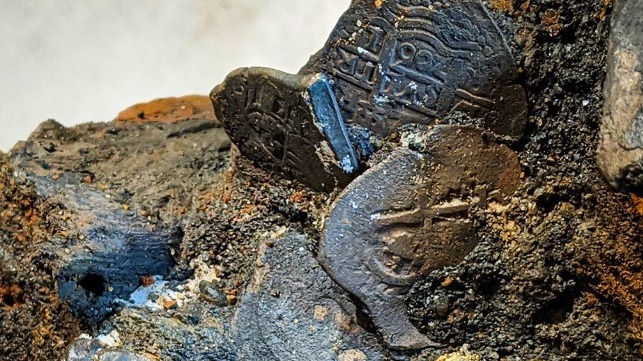Archaeologists Recover Remains of Six Pirates from Wreck off Cape Cod

A team of archaeologists has discovered six skeletons within the wreck of the pirate ship Whydah, which went down in 1717 in a storm off the coast of Massachusetts.
The latest expedition - led by Barry Clifford, who first located the wreck in 1984 - discovered one complete skeleton and the partial remains of five more within sediment concretions at the wreck site. If possible, the team hopes to use DNA profiling to identify the remains.
All but two of the 146 crewmembers aboard the Whydah died when she went down in an April nor’easter in 1717. 101 bodies were recovered from shore, but the remaining 43 were lost at sea. Some of the missing remains - potentially including the vessel’s master, Capt. Samuel Bellamy - are entombed at the wreck site, and a previous expedition retrieved a leg bone from the ship for DNA testing. (It did not appear to belong to the skipper.)
The Whydah is well known, particularly as her master was (by monetary measures) the most successful pirate on record. Bellamy captured more than 50 ships over the span of his brief career, making off with an estimated $120-150 million in treasure, adjusting for inflation. After serving under the notorious pirates Benjamin Hornigold and Edward Teach, Bellamy struck off on his own, capturing cargoes and generally showing mercy for the crews of target vessels.
During a transit between Hispaniola and Cuba, Bellamy came upon a brand new 100-foot slave ship - the Whydah - and forced its master to trade ships. The fast, well-armed galley would have served Bellamy well if he had not opted to voyage northwards; the ship was caught in a storm off Cape Cod and driven onto the shoals on April 26, 1717, taking her crew and her plunder down with her.
